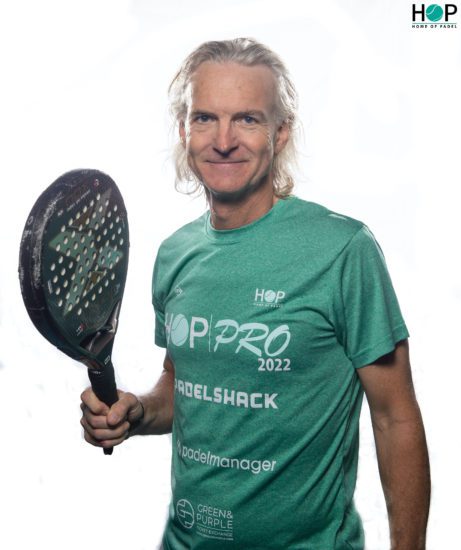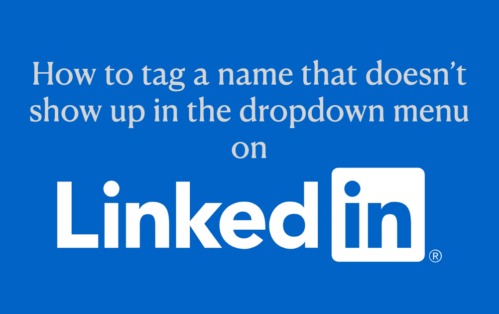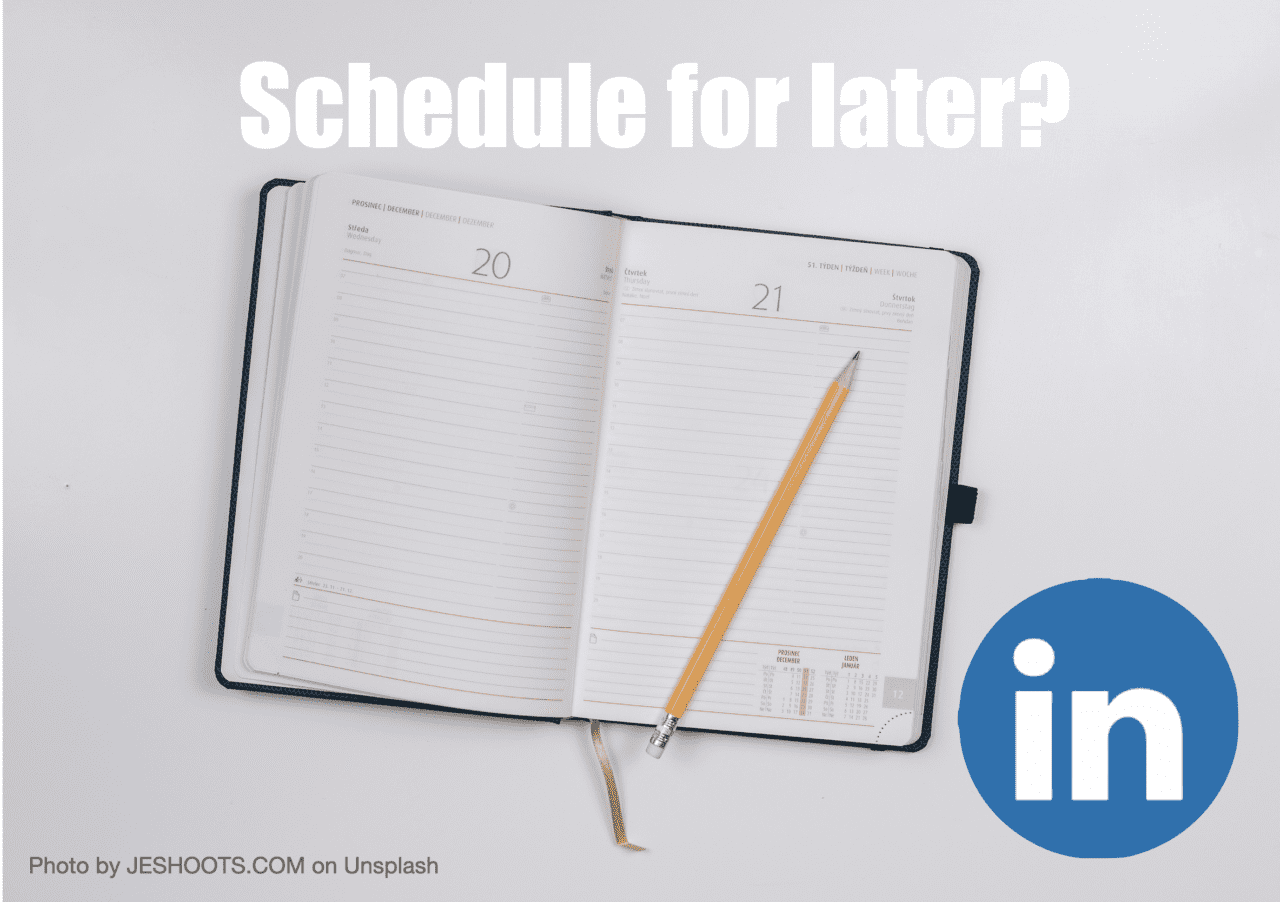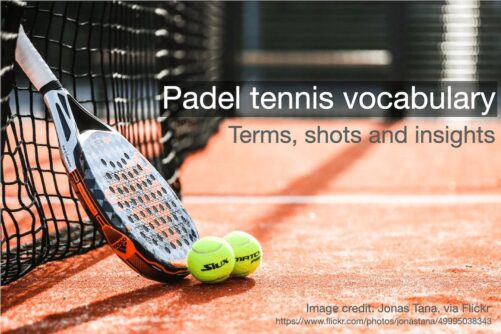The Joy of Padel podcast with Elena Martín (JOPS03E13)
Elena Martín, partner at PwC and co-author of the 2025 Global Padel Report, joins the Joy of Padel podcast to discuss the sport’s explosive growth. She shares insights on padel’s global expansion, including the projected 81,000 courts worldwide by 2027 and the USA’s potential to become the largest market. Elena delves into the factors driving padel’s popularity, such as its accessibility and social nature, and explores emerging markets in Asia and the Middle East. The conversation also touches on the sport’s Olympic aspirations and the challenges it faces in achieving that goal. This episode offers padel aficionados a comprehensive look at the sport’s current state and future prospects.
To find out more about Elena Martín:
- Find or follow Elena on LinkedIn
- Check out the previous episode with Elena for the Global Padel Report 2023 here
- Get the Playtomic Global Padel Report 2025 here
To listen to the show:
To listen to The Joy of Padel podcast, you can use the embedded player above, or go find it on Spotify, Apple Podcasts or any number of other podcasting services listed here.
Send in your questions or reactions:
Please send me your questions — as an audio file if you’d like — to nminterdial@gmail.com. Otherwise, below, you’ll find the show notes and, of course, you are invited to comment. If you liked the podcast, please take a moment to review and/or rate it! ¡VAMOS!
Further resources for The Joy of Padel:

The Joy of Padel podcast, hosted by Minter Dial, a padel tennis player since 1974, and powered by Pango Sports, is an exhilarating show that delves into the captivating stories of notable padel personalities worldwide.
Meanwhile, you can find Minter's other Evergreen podcasts, entitled The Minter Dialogue Show (in English and French) in this podcast tab, on Spotify, Megaphone or via Apple Podcasts.

About the host: Minter Dial
Minter Dial is an international professional speaker, author & consultant on Leadership, Branding and Transformation. His involvement in sports has been a lifetime passion. Besides playing 18 years of rugby, captaining athletics teams, coaching tennis and playing squash for his university, he’s been a lifelong player of padel tennis, starting at the age of 10, from the time of its very first public courts at the Marbella Club in 1974.
Then, after a successful international career at L’Oréal, Minter Dial returned to his entrepreneurial roots and has spent the last twelve years helping senior management teams and Boards to adapt to the new exigencies of the digitally enhanced marketplace. He has worked with world-class organisations to help activate their brand strategies, and figure out how best to integrate new technologies, digital tools, devices and platforms. Above all, Minter works to catalyse a change in mindset and dial up transformation. Minter received his BA in Trilingual Literature from Yale University (1987) and gained his MBA at INSEAD, Fontainebleau (1993). He’s author of four award-winning books, including Heartificial Empathy 2nd edition (2023), You Lead (Kogan Page 2021), co-author of Futureproof (Pearson 2017); and author of The Last Ring Home (Myndset Press 2016), a book and documentary film, both of which have won awards and critical acclaim.
It’s easy to inquire about booking Minter Dial here.
Full transcript of interview via Flowsend.ai
This transcription comes courtesy of Flowsend.ai, an AI service for podcasters.
Minter Dial: Hello, Elena Martín. It is the second time I’m having you on the show. Always fun to chat with you, Elena. You’re a bastion of the Padel world. You are a great Padel player, certainly in your youth, professional and, and today you are the one of the co-authors and the partner at PwC to do the 2025 Global Padel Report. In your own words, Elena, how would you like to describe yourself?
Elena Martín: Well, thank you for having me again here. It’s always a pleasure to share this time with you. I think I define myself as an ex-player now, kind of fun player and consultant.
Minter Dial: Yes, well, we have yet to get on the court yet. We’ve met, we’ve got close. Next time we’re going to have to play anyway. So, the Global Padel Report just came out and I’m betting that you had fun doing the calculation or someone in your team to come up with this two-and-a-half-hour global phenomenon which whereby you have a new club being open every two and a half hours worldwide. So, having tracked the industry for so long, what does the rapid pace of expansion of padel as we’re seeing it tell us about the maturation of the sport? Or is it, you know, versus the hype?
Elena Martín: I had to do the numbers when you, when you said that figure. But yes, having, having tracked the industry for the past four years, I’d say at some times or in some geographies we’ve experienced periods of unusually rapid growth. But now overall trends reflect as sustainable maturation process. I think the sport has moved from the initial novelty, some, let’s say, uncertain steps, to now showing a steady, consistent expansion and establishing a solid foundation. I would say, I think I mentioned that at the presentation that now we kind of understand the ups and downs that we’ve gone through. And now I see this sport evolving into a mature sport with a strong community support, the infrastructure being established. So, going over this simply temporary enthusiasm.
Minter Dial: Yeah. With the presentation you’re referring to, of course, the Padel World Summit 2025 held in your wonderful city of Barcelona. Yeah. So, what I noticed in one of the graphs you have Sweden as even being more mature than Spain. Perhaps it’s just because you couldn’t put them on top of each other. But it does bring up this notion of what is the potential for saturation, you know, when you’ve got, I think in Madrid, what is it, 30,000 people per court, something like that. Whereas in, in many other parts of the world we’re talking, you know, millions of people per court, almost. So, when do you know that the, the maturation is going to hit. You know, I don’t think there are that many countries that are going to have as many people as Spain playing. I mean.
Elena Martín: So, this is an exercise that we tried to do when we did the first global budget report, and basically we tried to find what are the factors that are defining the maximum capacity that a country has in terms of players. Slash courts. And there the. So, the factors that define that are obviously, one, the population, two, the population that has, let’s say, spare time and spare money. So, it’s not only about population but also about having the time and the money to spend on, let’s say, leisure and then the penetration of sports, the penetration of racket sports more specifically. So, that’s why we showed that graph where. So, Sweden is in. If you calculate that number of that theoretical level, like maximum level, maximum number of people or maximum number of courts, we think that Sweden went over that number, actually. Whereas Spain, although we have a lot of players and a lot of courts, we haven’t reached that maximum yet. And actually, I was pretty surprised this year because I was expecting not a lot of courts being built in Spain. And still the manufacturers are reporting courts being built in Spain. Not only refurbishments, which I expected, obviously, but also new, new clubs, let’s say.
Minter Dial: Yeah, well, just to go back to some fact checking on mine, my case, I was talking about the numbers of quartz per person. I was just checking. Right, as you spoke, In Madrid it’s 33 courts per 100,000 people. In Manchester, I just did a report, it’s around two courts per 100,000 people. And in London it’s basically the same. So, there’s still an enormous amount of growth, assuming the people vi, you know, get into it and start buying into it. And you wonder. And. And we were going to talk about the USA a little bit later, but I was just in the US and they were talking about how pickleball in some places is now on the decline. People are sort of moving away from it. It’s not, it’s. For some, it’s too injury much because it’s. For a lot of people who play are not quite as athletic as you say, maybe like a tennis player or even a Padel player, squash player. And. And then they also don’t find it as exciting. Whereas I think padel has more athleticism, more excitement in it, and therefore can be more attractive. Maybe I can just jump to another question, which is you also identify that there are 92% retention. Is it 92 or 90 that you have a 92% return rate once one person is paid one time. And that seems like an amazing amount of stickiness. I don’t know if there’s any other sport that can get people addicted so quickly.
Elena Martín: I think that it is, it is like tremendous. And the main reason of this stickiness, I would say it’s because it’s very, it’s incredibly fun. Let me tell you, let me tell you a story. My 13-year-old daughter, she plays tennis at a competition level. I think I told you she trains 15 hours per week. Competition, I mean the whole thing serious. Last Easter we spent a week in Malaga, and she played for the first time Padel in a family kind of easy match. Right. My other daughter, my husband, just people coming in and out and she, she had a blast. She said this is so much fun mom. She said I have to run much less than I do when I play tennis and I’m so good at it. She’s obviously not that good. But this sense of enjoyment and competence is pretty difficult to beat.
Minter Dial: Yeah, that sense of achievement.
Elena Martín: Yeah, exactly, exactly. And also, you were comparing it to pickleball. I haven’t played pickleball. I’m sorry. But I think Pavel has this pointing between pickleball and tennis where has some degree of a little bit more exercise than you do in pickleball as far as I understand 100 but not as demanding as tennis. So, if you’re either if you’re fit but you don’t feel like doing a lot of exercise but rather doing a social plan or if you’re not that fit like it’s a perfect match. And also it’s very social that pickleball has to that you’re four in a court. You chit chat. The sport is pretty fast if you compare it to tennis. For example. In tennis you spend a lot of time picking up balls because they’re far away. Whereas in puzzle they’re well mostly in people’s pockets. Otherwise you’d step on them.
Minter Dial: Yeah, that’s even more true for the little kids where you know going to get a ball is such a long distance and they don’t pop it out of the court quite as many times. And I would say I would add the other piece which is that for the people who want a good workout and you have three other equal level players at a higher level you can get a serious proper cramp making workout and it doesn’t have to be 35 degrees outside it can I, I mean I, I have, I’ve recorded a 1-800-calorie game of Padel, which is tantamount to maybe an hour on a squash quarter. You know, big, big hour on a squash court or big, big hour on a tennis court when you’re playing at a very high level. But anyway, so that’s another good thing. It doesn’t cap you just because it’s easy. It doesn’t cap you up here.
Elena Martín: I totally agree. And when I played seriously, let’s say, a lot of people told me, oh, it’s, you don’t do, you don’t exercise a lot. And I said, okay, you come and you see what we do. Right. But for the stickiness part, let’s say I was referring to most the general population, not the ones played seriously or at a high level or.
Minter Dial: And just going back to the family outing, I’m just going to have to guess this, that your younger daughter played with your husband and you played with your older daughter, even team actually with five.
Elena Martín: You know, because I have the two daughters. And so, one was out and then every four games, one came in and another and we tried not to repeat couples.
Minter Dial: So, yeah, family mixing, as they say. All right, so moving on, moving back to the report. You, you talk about the 50,000 courts. We’ve now passed that threshold. And you would say, having looked at it, what, what does this. Does, does this scale actually surprise you? And by the way, I’m just wondering because in our last chat we did talk about Argentina. Is Argentina included, have you managed to get the numbers for them? Because they seem to be only mildly included in the report.
Elena Martín: Okay, to your first question. So, yeah, the number is impressive, but does it surprise me? Not. Not really. I’d say there’s some large countries that have like now play a role alongside Spain, for example, Italy, France, Sweden, which was here some years ago. So, I’m not really surprised by that. For me, the, the largest takeaway here was that, yeah, we’re matching the forecast that we.
Minter Dial: So, bravo for that, by the way.
Elena Martín: I mean, every year I’m like, I.
Minter Dial: Hope exactly 24, 23, 25.
Elena Martín: I hope what I said last year is going to, to happen. And like to give you the other side of the coin, 50% of the courts are still Spain, plus Italy, something like this. So, meaning once Germany, the UK and then the US and obviously not so developed regions, other continents come after that. I mean, these numbers are going to be small in a short period of time. And then regarding Argentina, the thing is, we have taken into account Latin America in the data. We hadn’t had them last year, only like a rest of now we’re working, we’re going down a little bit year by year, trying to get more detail. I can’t give you a number of courts in Argentina. Argentina. We, we’ve worked here more with interviews, taking into account the International Federation too, because data for Argentina is very difficult to track. Yeah, it’s challenging for two reasons. One, there was a. There were a lot of courts built during the 80s, which, let’s say. Don’t be old fashioned.
Minter Dial: Yeah, yeah, exactly.
Elena Martín: Yes. And some of them may not be in use, meaning the walls are there, but they’re not used anymore.
Minter Dial: So, there’s no net track.
Elena Martín: Both how many are there and whether they’re used. We’re going to do this effort. I talked to Playtomic this year and we said we’re going to do the effort. We’re going to try to do the effort next year to have an acceptable figure, let’s say something I have confidence in. But we did take it into account within Latin America.
Minter Dial: Yeah, it’s so difficult. I did have Viviana Corcuera on the podcast recently and talking about Argentina and how it was sort of like basketball on the street corner in Argentina. It was just everywhere. And of course they’ve had the economic problems, so they haven’t been able to quite invest in these new fancy courts compared to just having cement blocks on every corner. Yes, I get that. All right, so now we got you the projection. You have 81,000 courts worldwide by 2027. You also suggest that USA will be the largest market even before 2030, at least. As, as your graphic shows you, as soon as US becomes on stream, you are going to be talking about a huge amount of new courts because of the volume, the size of that country. And when it gets going, it’ll, you know, you can imagine thousands of court per year. I suppose that’s how your number comes up.
Elena Martín: I mean, the number comes up by doing this exercise for all the geographies. But obviously the big countries play a big role here. The U.S. i don’t expect it to be, let’s say, booming next year. So, 26, rather 2027 and on. And I wasn’t aware that I said, I mean, I, I can, I, I recall the graph that you were, that you’re.
Minter Dial: I just looked at the squiggle, you know, I just looked at the curve.
Elena Martín: I like, I, I didn’t take that takeaway from the graph, but maybe.
Minter Dial: You know, I’m a numbers guy sometimes.
Elena Martín: Yeah, I see now I see. Like you’re getting into the details. It’s fun when you prepare such a report and then you like, send it to the world.
Minter Dial: Yeah, exactly.
Elena Martín: And then you come, you get feedback or Whatsapps or emails, talking about small details that probably you didn’t notice that we’re sending some messages that you didn’t highlight.
Minter Dial: Yeah, exactly.
Elena Martín: But yes, I mean, the US is going to be one of the markets, obviously.
Minter Dial: It’s going to be exciting. My cousin, of course, is involved in Miami. He’s just opened up a new club in Boca Raton in one of the hubs, of course, the, the Florida area, naturally, because it has the Latinos and it has the beautiful weather, but they also do indoor courts. And I. And I think that looking at the. Your graphs about the. The number of indoor courts to outdoor courts, it’s still such a painful thought that in a country like Great Britain, where we know that it rains just a lot, that there are. There are much as a Greater is like 58% are outdoor as opposed to indoor, whereas even in Spain you’re well over 50% in indoor courts. So, things to learn A I. I’m.
Elena Martín: Not surprised by that. And so, here at the beginning, we also had a lot of outdoor. I would say 100. Everything was outdoor. Why? Because at the beginning there’s two reasons. One, it’s less expensive to build an outdoor court. For the indoor court, you need to have like either the warehouse or like build the roof. And at the beginning, if you’re not, if you’re unsure money is not that much available, then you may try. Even if occupation, which is the KPI for this business, may drop, especially in a country like the UK where it rains quite a lot. And the second one is sometimes at the beginning there’s substitution of courts. So, if you have a tennis court, a tennis club, you can build a couple or three padel courts where there’s one tennis court and let’s say the activity licence is valid. So, what happens is these are usually not new clubs, not necessarily new clubs, but refurbished ones. Whereas in Spain we started like that, but then when the sport boomed, everyone was building indoor courts. So, at the beginning everyone was. Everything was outdoor and then little by little, outdoor were being built. And I expect that will happen in the UK too. But now it’s still, let’s say, it’s well known already. I think it’s at the point where everybody knows what Padel is, or most of the population knows what Padel is. Call it like socially. It grew socially, let’s say. And the UK in that sense is being a benchmark because the investment is being carefully looked at and which may hinder a little bit growth, but establishing solid routes and I think the indoor event that the indoor boom will come.
Minter Dial: Yeah, I, I also think one other thing because I was there, of course there at the beginning of Paddle in Spain is that it was located essentially on the Costa del Sal, so, so lots of sun and outdoors and that was the sort of, that was the hub back in the day of, of Padel. So, it started outdoor and moved indoor. Anyway, the, the hope is that we get more indoor in the UK. We. You, you talk a lot about the UK. You have a specific page on them and one of the things you look at is the gross monetary value. And, and I was just. Why did you look at only the court expenditure? I, I, My thinking is the pad, rackets, balls, clothing, apparel. I, I think that’s what you did. It seems that your GMV is focused on the, the, the club version least, but even for them, the accessories of the, the beer and, and that those type of things add to the profitability and the, the opportunity for Padel in the UK or anywhere. So, your, your focus on the Padel course is that because of Playtomic? And then secondly, look at the, the growth in the UK. Do you. What do you think is driving that, that sort of huge GMV in the UK?
Elena Martín: Okay, to your first question. We’re looking at the courts because. So, it has taken, it has taken, let’s say, a massive effort to now be confident and be able to give detailed figures on each country and be, as I said, confident about them. So, but we are planning to move on to other so apparel, media even. So, let’s say the whole industry and GMV was, let’s say what we were comfortable with showing to the people. I talked to Playtomic the other day and I say this isn’t a report that’s comprehensive. Meaning in some consulting works we need to be comprehensive. Here we’re not being comprehensive with, we’re being as good. So, we’re giving out everything that we have that we think is good and we’re confident if we’re not confident on that because we are deciding what we’re analysing. Of course, we’re not confident on data, we’re not releasing it, so that’s basically the reason why, but we’re moving in that direction. And regarding the GMV of the UK, so the first thing is, as I mentioned before, in the UK, investments are being made with a high level of financial scrutiny, meaning things are being done more professionally or more Financially based than what I’ve seen in other geographies. This may be slowing down growth because the requirements are higher by the investors, but that’s, let’s say, cultural. It’s something that’s happening, but there’s no regulation that’s asking UK investors to do this differently from in other places. And so, because they’re analysing their projects better, the outcome is higher because it’s evenly distributed. Higher. That’s one thing. And the second thing is. So, the club or the court business is at its core a real estate investment.
Minter Dial: Sure.
Elena Martín: And the UK has some of the highest real estate prices globally, so it’s not surprising that GmbH per court is also high. Right. Because it’s basically it’s not only the operations but the underlying assets themselves that are expensive too. So, I would say it’s a combination of these two factors.
Minter Dial: That’s good. Those are great insights, Elena, thank you for that. That’s really cool. So, listen up folks in England, let your risk tolerance go higher and get us more courts. But anyway, that’s that it needs to be profitable, so that makes sense. So, switching away from the UK and the more mature markets, we’re looking at the report, you’ve got a great growth. I indicated lots of, I would say, surprising countries. You mentioned Indonesia, Thailand, Tunisia, as opposed to the Swedens and Spains of the world. How do you assess which markets will have genuine staying power versus just an enthusiasm or hype or just, you know, a quick bubble.
Elena Martín: So, for these Asia Pacific countries that we identified at this point, they’re more. So, they’re growing a lot compared to the baseline which was basically in existence. And at this point it’s mostly most players are Western expats.
Minter Dial: I see, so.
Elena Martín: So, it will take time before Padel truly takes root with local communities. So, I wouldn’t dare to bet which of those countries will stay and will really rule with, as I said, with locals. Right. Sweden for me was a unique case which explosive growth was driven by a combination which is not happening again. So, I don’t see that as an example either.
Minter Dial: It’s an outlier.
Elena Martín: Yes, yes, exactly. I think Europe now is, I mean, a no brainer. Italy has grown, France is well established. We’ve got the players, the tournaments, the competitions, the federations. So, Europe is a no brainer. I think the US is starting to position itself as the next new big market and these Asia Pacific countries, we’re seeing like, I don’t know, 500% growth. Right. But the base is so small and the base player is not local or not local enough. So, we’ll see.
Minter Dial: Yeah, you do write about India having 60 million people being potentially affluent enough to get into padel. So, there does seem to be some possibilities of local growth in that country in any event. Plus they also don’t have the, well, let’s say a more traditional version. Well, they do have traditional parts of society, but they have a lot more explosive, more sorry, more open types of society. I’m thinking particularly of women, for example. And speaking of women, I mean, it’s amazing. I just had Najwa Salhab on my podcast. Who’s the. She plays for the Saudi national team. Women in. In Muslim countries, you know, basically I would have had a priori that they weren’t playing sports. That’s certainly how it looks in London when you took it look at the traditional Muslims. But obviously in Saudi, in Dubai, you’ve got a lot of women playing. And I’m wondering, I suppose in India and in Indonesia where there are such a large Muslim communities, to what extent we’re going to allow. We’re going to use Padel as a way to get women to be allowed to have fun and play sports.
Elena Martín: Yeah, I wasn’t so surprised that in Middle east women are playing padel quite a lot. I think it’s a sport because of what we talked about before. It’s a sport that allows for people who are maybe not doing that much sport to have fun and to get engaged quickly. So, it’s probably difficult for them, I don’t know, to play tennis because it’s technically, it’s very difficult. You need to be very athletic. And so. But this is kind of a, let’s say, social event where they can get engaged and do some, some exercise. And I think they did a good job by separating male and female courts, which make it easier for the. Their culture to be able to play without these, let’s say, really use compromises.
Minter Dial: And in breaking of the stereotype, I played with Najwa in Saudi in Riyadh, and it was with her sister and a few other friends of hers. And so, it was a fully wonderful and open experience. And so, it is happening. And that’s the, that’s the true joy. So, anyone wants to know a little bit more about it from the inside, go Joe. Check out my, my interview with Najwa. But all right, so I want to focus on the last part here on the Olympics, because in the end of the day, this has always been a big topic for me and there’s lots of hype, but you spend A good amount of time deep diving into that. What is it going to take? And you’re talking about the possibility of it being in Brisbane in 2032, where you need to have presence in 75 countries. The big rub seems to be, or at least the one that sticks out is only two countries, Spain and Argentina. And I wanted to preface that in saying, well, the fact that there’s only two countries that are dominant doesn’t seem to stop. Table tennis, where we’ve had China win 24 of 28 gold since 1988. Badminton, where China has won 18 goals since 1992. Diving, where over half of medals since 2000. All half of medals since 2000 have been won by China. Nearly half of all medals for South Korea. Basketball, 19 golds for the USA. Women’s ice hockey, only two countries have ever won gold, USA and Canada. So, there’s a. I have a list that goes on about this. So, anyway, I’m just trying to. Of course I’m excited about the idea. How is it that those ports are allowed to do that with two countries or one. And a padel might be refrained because it only has Spain and Argentina.
Elena Martín: Okay, there’s several questions here. First, for me, ice hockey should be out of the equation because Summer. Summer Olympics are much tougher than Winter Olympics. But the others, the others remain. There’s. So, I’m not saying, I’m not saying, I’m not betting against. So, I’m not saying that I won’t make it. I’m just saying it may. It’s one of the, it’s one of the difficulties that we see there in these countries. So, in these sports that you mentioned, countries have had the time for like to have athletes who are competitive enough. The thing is in Padel, if you see the world team competition, you see that it’s usually Spain and Argentina. And I was talking to an like, let’s say investor or a businessman from the UK the other day and he said, I mean, our best players have played for four, five years most. Right. Except for you who lived in Spain, etc. Right. But. So, they haven’t had the time. Like Spanish and Argentinian players are there since they had. They were four chiquitos. So, it’s something that may be seen as difficulty. I’m not saying that it’s not possible. I’m just saying that. So, Padel has already 87 federation that signed up with the International Federation. So, that is no longer a reason because we already meet the numbers. I’m just trying to find why aren’t we there yet? That’s one of the reasons. And the second reason I find, and we were talking about women before, is that women. Padel is one of the sports where women represent a larger share of players. But when you go and check competitions, that’s not. That doesn’t remain so women are playing a lot. I would say 50% of players probably are women, at least in Spain. But when you go to competitions, I don’t know. I played the, my regional competitor to the Catalonia Regional championship last year and there were 13 draws of men and for women there was only two like major and second. And, and let me tell you more, I played. So, the year before I had played second, second category. And I won quite easily because I don’t have ranking at the time. I won very, quite easily. I didn’t lose as well. Me and my partner, we didn’t lose a set and then we asked for a wild card last year and then the first category is. So, the, the step like it’s very large. So, women at a competitive level is also something that need to be taken into account.
Minter Dial: That’s very fair. Well, it does feel that there’s another issue, which is the media because what we see, and this is I was chatting with Johannes Thomhave who has Padel TV, is that in reality there are people are more interested in playing than watching. As opposed to so many other sports where people are interested to watch but don’t play, like football or even tennis. It’s a sport that people just. I’m surprised. Going back to another point, just quickly, you did say about, you know, in the UK it’s become more known. It’s still a comment where at a dinner table or at a party, oh, I like playing padel. Oh, I know about Padel. Like they jump up and say I know about Padel. They don’t play it necessarily, but I know my husband has played and he likes it or my. I, my daughter has heard about it or this, that kind of thing where it’s still not like, oh, well, I play too, you know, duh. But anyway, going, going back to the media story. We have 30 million odd players, half of which are women around the world watching. But the number of times that I can go to a court and play Padel. Oh, did you see the shot by Galan in Bilbao or you know, or in, in Valladolid which just happened. Who? What? No. So, the knowledge of pro panel amongst players in the UK is still very low. I, I know coaches who don’t follow pro Padel I mean, I find that that’s almost a, you know, a professional error not to know what’s going on in the pro world. It should be part of your daily regimen to watch some pro Padel, to learn about it, what’s going on, the new shots, the new tactics and new partnerships and everything. But anyway, that’s because I’m a little bit loco, as you know. But anyway. So, what do you think about the media story for Olympics? For par.
Elena Martín: For me, two points here. One, I understand that there’s some people who don’t watch Pro Battle because it’s so far away from what they play that they don’t recognise themselves. And sometimes when they tell me that, I say, oh, you need to watch women panel, which is probably closer to what you do. But media, I mean, it doesn’t. What are the sports that people watch? They play football. They watch football, probably basketball, tennis. No one watches golf. That moves a lot of money. I mean, only people who play golf. There’s, I don’t know. I do watch, I mean, local, too local in this case. I do watch athletics, athleticism, swimming, but gymnastics. But there’s a lot of sports that are not watched and are Olympic. So, I, I, I don’t think, because, like the Olympic spirit and peace and sharing and competition, gender, etc. I don’t think is that much influenced by media. And the newest sports in last Olympics, one of them was skateboard. Who watched skateboard? So, in my opinion, and it’s mine, doesn’t need to be. The truth is that media is not that relevant for the Olympic path track.
Minter Dial: All right, well, good, good to hear. I really appreciate that. I am a last question for you. You are. You’ve now become known as the writer, co author of the Bible of Padel, which is a, you know, pretty cool denomination. And congratulations for you for leading that. Elena, where do you see the biggest opportunities and risks that aren’t immediately obvious about this impressive growth that we’re doing? What do you see as ups and downs that we might be faced with in the future?
Elena Martín: So, in terms of opportunities, I think, and from what I’ve seen, you need to be in a market a little bit before it really like growth, like really booms, let’s say, or takes off. So, for example, the companies that were investing commercially in France a couple of years ago or last year, we have started seeing returns this year and they’ll continue seeing it. But I think it’s the same in most market that you can’t arrive there once the game is happening. You need to arrive there a bit sooner so that you’ve got your established presence there. So, that’s first thing. Second thing is, and I have heard that a lot from growing markets is that it’s very difficult to find qualified Padel coaches or academies. So, because that’s scarce, it’s probably that opens a real business opportunity, be it creating coaching platforms where coaches may be able to relocate or so being like a, a marketplace for, for coaches, for example, or even online training programmes. I’ve seen some of those in Instagram, but kind of one person, one man show or one woman show. Whereas these kind of platforms I think would need to be, let’s say properly. And on the risk side, I think that building a strong, broad player base is essential. So, maintaining engagement across all age groups so that it’s not only a 30 plus male sport and that moves out to women, kids, that will be the base for future generations. If the sport doesn’t keep evolving to appeal these people or these other parts of the population, it may risk of reaching a plateau and never reaching real maturity.
Minter Dial: Well, the counter example I’m hoping is the intergenerationality of Padel. Whereas in tennis, if you’re a 22-year-old and you’re playing against your grandfather, not a lot of fun, especially if you’re good, you know what I mean? Because you have to hit it directly to him this and that. Whereas in padel, I have played with grandchildren and grandparents and we have had an absolute hoot. So, a word to everybody who’s a retired old man like me, get your children out there and, and have some intergenerational fun. All right. Well Elena, that has been great fun. Love seeing your smile, love having you on your on. To talk about our mutual passion for Padel, let’s start with how can anybody get a hand, their hands on this wonderful bible of Padel?
Elena Martín: Well, they just need to go to Playtomic’s webpage or maybe Google Global report Playtomic and they’ll find it there. You need to leave your name just for tracking purposes, but nothing else. And then you’ll just download it and read it. It’s a good read.
Minter Dial: Indeed it is. And if anyone wanted to reach out to you, Elena, is there a way that someone could do that or is there, is that just too much information?
Elena Martín: I get, I get reached like often mostly through LinkedIn or I think my email is in the report, I’m not sure but otherwise LinkedIn is a good way. I get a lot of messages and usually attend and I, I have conversation with potential investors and students that are doing work on Padel, so I’m happy to respond there.
Minter Dial: Well, final word for the future of Padel arena. One word.
Elena Martín: One word. How do you say. I wanted to say it in Spanish, like illusion. Meaning it’s impressive. Yeah.
Minter Dial: Love it. Beautiful. Elena. Muchas gracias.
Elena Martín: Thank you for having me here.











